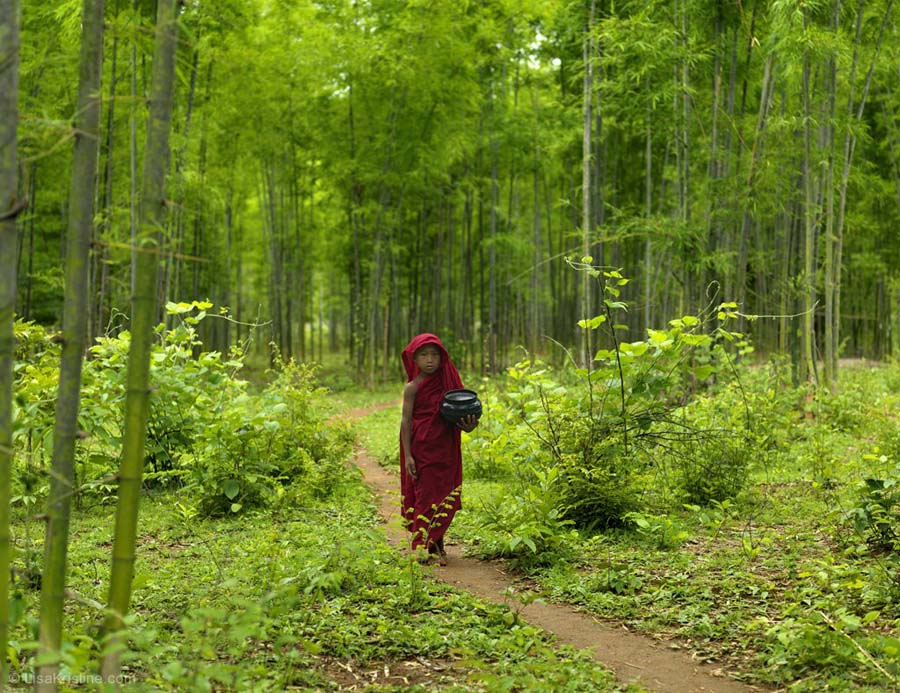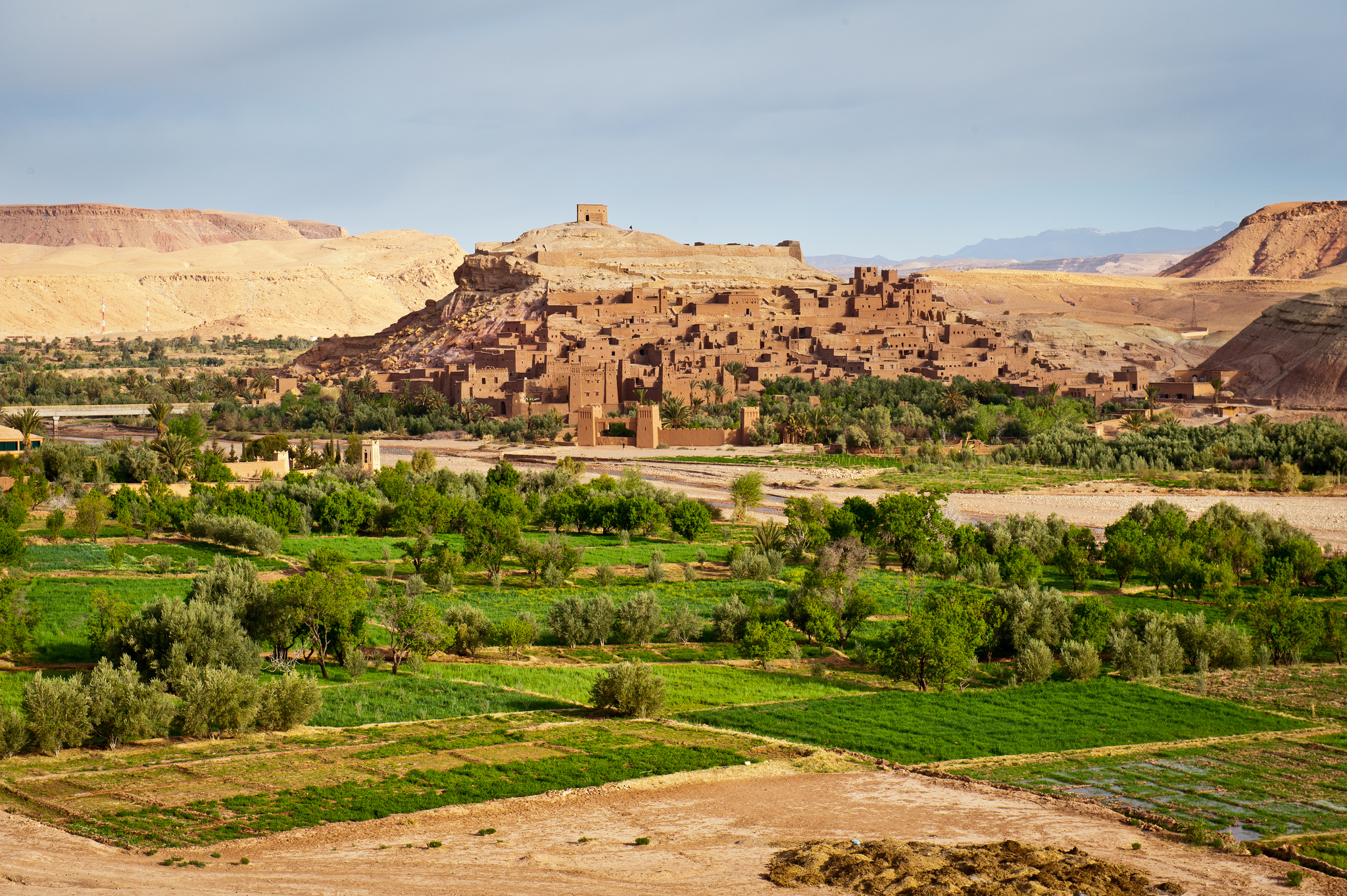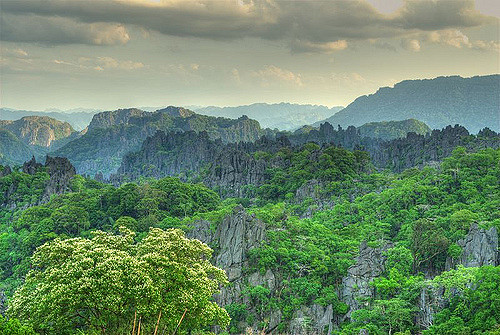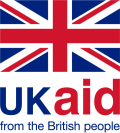You are here
restoration

Forest Sector and Restoration and Reforestation Program Review in Myanmar
Program Summary
This PROFOR activity aims to assess the strengths and limitations of Myanmar’s forest sector, with specific emphasis on the National Restoration and Reforestation Program and its community forestry aspects. The Government of Myanmar has issued very clear targets and actions to achieve large scale restoration and reforestation, which form the cornerstone of the national climate change response agenda and Myanmar’s contribution to global climate change mitigation. This activity will be part of a larger country analytical work, the Country Environmental Assessment (CEA), which will contribute to the development of a broad overview of the linkages between environment and development, highlighting the potential role of forestry in enhancing social inclusion and reducing conflict.
Challenge
The exceptional natural resource endowment of Myanmar – from forests, biological diversity, fisheries, and land through hydropower, oil and gas, gems, and minerals – forms the principal source of economic growth and social wellbeing in the country. Nearly 40% of its GDP comes from primary industries including agriculture, forestry and fisheries (ADB Myanmar Diagnostic 2014). However, these resources are under tremendous exploitation pressure, resulting in the highest rate of deforestation in South East Asia (ADB 2015) and loss of nearly 20% of its forest cover between 1990 and 2010 (EIU April 2017).
Myanmar’s forests have also been home to recent internal ethnic conflicts that were largely located in timber and mineral-rich areas. The underlying causes of the conflict are largely political, but access to natural resources, including timber, has been fought over and sustained Ethnic Armed Organizations (EAOs) over the years. The ongoing peace process has brought large regions under civilian government control. This presents new opportunities for forest management to transform forests over time from a source of conflict to a platform for improving social inclusion, local cooperation and civic engagement.
Approach
The program consisted of activities grouped under two phases:
1. Forest Sector Review:
This phase consisted of a technical literature review, analyzing existing data on the social, conflict, economic and ecological dimensions and trends of forests in Myanmar, as well as on current policy and strategy. Where possible, statistics were applied to evaluate significant relationships among variables within the sector.
a) Forest contribution to rural livelihoods and national economy: This activity included a review of the importance of forests for improving livelihoods and poverty reduction, and their contributions to the economy directly, as well as through other sectors.
b) Forest Smart Interventions: The focus was on assessing the importance of forests to other sectors, and the ecosystem services they provide to contribute to economic productivity and climate resilience of these sectors. On the flip-side, the assessment also reviewed the main drivers of deforestation and aimed to identify solutions to address them and find ways to strengthen the engagement in the forest sector from a programmatic, multi-sectoral and forest smart approach lens.
2. Assessment of the National Reforestation and Forest Rehabilitation Program (NRRP) (2017 – 2027) with special focus on community forestry and tenure.
a) Spatial assessment of forests, forest degradation, opportunities for restoration and poverty and conflict related data
This activity mapped the link between forests and poverty and conflict. Spatial data on national forests, historic deforestation, and opportunities for restoration were paired with national poverty data and conflict maps. This activity was executed in partnership with IUCN and other initiatives on poverty and conflicts led by the Asia Foundation and poverty data work by the World Bank.
b) Assessment of community forestry initiatives in Myanmar and its governance and policy aspects
This assessment examined ways that community forestry, non-traditional sources of timber and forest-based livelihood activities are currently recognized within the national (or state and region) policy and regulatory frameworks and identify ways to incentivize community forestry through improved commercial prospects for legally and sustainably community-produced timber and forest products.
c) Overall Assessment of the National Reforestation and Forest Rehabilitation Program
-
Assessed government institutions involved in the delivery of the Restoration Program, including staffing, incentives, budgets and partnerships. Major focus was on the conflict-affected areas and where social inclusion could be promotoed.
-
Assessed (and communicated to stakeholders in real time) actual program implementation using an innovative and cost-effective geotagging (geo-enabling) application that used open source and Android operating system and phones/tablets.
-
Analyzed three larger ongoing restoration initiatives (supported by IUCN, ADB and possibly others) related to their technical and implementation arrangements, lessons learned and approaches.
-
Prepared recommendations for the National Reforestation and Forest Rehabilitation Program based on previous assessments of technical opportunities and social priorities, lessons learned and results from the overall governance assessment.
Results
This activity has concluded, with the following results:
- Findings and analysis have fed into the Myanmar Strategic Country Diagnostic.
- World Bank Operations:
- The analysis supported by this activity fed into design of the IDA investment project (Forest Restoration, Development and Investment Project (FREDIP) (P168254) and of the investment project targeting community forestry interventions currently under preparation by the Agence Francaise de Developpment.
- Initial recommendations from the MRRP community forestry assessment allowed the team to propose inclusion of community forestry activities under two other IDA pipeline operations in the conflict affected areas in Myanmar (Peaceful and Prosperous Communities Project (US$200 million) and the Rakhine Development Project (US$100 million).
For stories and updates on related activities, follow us on twitter and facebook, or subscribe to our mailing list for regular updates.
Last Updated : 05-22-2020

Sustainable landscape management for improved livelihoods in the Middle East and North Africa
Program Summary
This PROFOR activity aims to build the necessary evidence base and rationale for developing a regional and harmonized program on landscape restoration and sustainable management in the arid, semi-arid, and desert areas of sub-Saharan Africa, the Maghreb, and the Mashreq.
Challenge
In MENA and sub-Saharan African countries, there is a growing awareness of the important social, economic and environmental roles played by forests, rangelands, and oasis landscapes. All of these ecosystems face threats from agricultural expansion and increasing demand for food, fiber, fuel, and minerals, as well as misguided agricultural policies.
There is also growing evidence of significant negative externalities from landscape degradation - including the impacts of climate change, biodiversity loss, air pollution, soil erosion, rural poverty, and migration. These issues are gaining political attention at the global, regional, and national levels, but while several initiatives have been launched to combat landscape degradation and strengthen resilience to climate change, more transformative investment is needed.
Approach
This activity will first review existing literature on the extent, impact, and economic costs of land degradation and desertification over the last couple of decades in MENA and Sub-Saharan African countries.
Subsequently, the team will assess progress made by national and regional restoration programs, and identify the primary barriers to furthering that progress using PROFOR’s PRIME framework. Other land restoration programs will be evaluated for lessons learned and applicability to the targeted regions, including experiences from China (e.g. the Green Wall Initiative) and the United States (e.g. actions taken to combat the Dust Bowl phenomenon).
Based on this analysis, this activity will explore how the World Bank can best leverage its convening power to bring together (and finance) restoration initiatives. An economic feasibility study will be carried out, looking at the potential for a regional program on landscape restoration and sustainable management.
Results
- Sustainable Land Management & Restoration in the MENA Region – Issues, Challenges and Recommendations
- Sand and Dust Storms in the MENA Region – Sources, Costs and Solutions
For stories and updates on related activities, follow us on twitter and facebook, or subscribe to our mailing list for regular updates.
Last Updated : 06-08-2020

Sustainability and restoration of Lao PDR’s Forests
CHALLENGE
Lao PDR has 9.5 million ha of forest cover, representing about 40% of land area. Deforestation rates are very high and as much as 80 percent of the country’s forests are now degraded. Despite government efforts to reverse these negative trends by reducing illegal logging and aggressively prosecuting forest crimes and corruption, considerable damage has already been done. Under this context, the Ministry of Agriculture and Forestry (MAF) and the Department of Forestry (DOF) are working to institute stronger measures to foster Sustainable Forest Management (SFM) and to restore deforested areas or highly degraded forests, which incorporates SFM certification, timber legality assurance systems, and reforestation.
SFM certification in Laos and its border countries is still in its infancy. Altogether, only around 135,000 ha are certified as sustainably managed—80 percent which are in plantations in Vietnam and Thailand. In Lao PDR, only 10,949 ha of natural forests and 2,606 ha of plantations were certified as sustainably managed (as of January 2017). Cambodia has only 7,000 ha certified and Myanmar has none.
Barriers to forest certification in Laos include (i) an inadequate enabling environment to foster certification of a significant level for protected forest areas (PFAs) and associated forest products; (ii) lack of perceived benefits; (iii) complex, unclear and prohibitive costs for village plantation group certification; and (iv) lack of a Lao unified group certification system. There is, therefore, a need to develop and disseminate state-of-the-art knowledge in Lao PDR that can demonstrate that forests managed in sustainable ways can provide long-term economic and financial returns for the country, industry and rural communities while generating positive environmental and social benefits.
APPROACH
This activity aims to strengthen understanding of issues, lessons learned and key actions to: i) review forest implementing policies, legal instruments and institutional frames for participatory SFM, forest restoration and reforestation; ii) increase role of certification (sustainability) and verification (legality); and iii) better understanding of the contribution that forests make towards sustainable livelihoods and mitigation of climate change. These outcomes are closely aligned with the Lao PDR Green Growth Development Policy Financing (DPF) operations, which aim to increase Production Forest Area (PFA) Certification to around 230,000 ha from the current 10,949 ha.
The work is being organized into six sub-studies, one final synthesis report, and two validation workshops. The studies will focus on: sustainable forest management; certified wood products; policy support for SFM, chain of custody, and a timber legality assurance scheme; public-private partnerships for forest restoration; economics of certified sustainable forest management; and a retrospective on forest sector development.
RESULTS
- More holistic approaches to SFM, including participatory forest management, restoration and reforestation options and trade-offs;
- Differentiation between participatory SFM in natural forests, especially village forestry, and private sector investments in plantation forests (including through outgrower schemes or smallholder plantations), including fiscal incentives and/or tax exemptions for plantation investors certifying their plantations and/or adopting socially and environmentally responsible approaches;
- The use of certification for proof of sustainability from production forest areas (PFAs) and plantation forests and verification for proof of legality for forest conversion areas for future unimpeded access to the increasing number of countries with public procurement policies requiring these SFM tools;
- Clarifying, streamlining and strengthening the wood products supply and value chains to improve returns to producers and growers;
- Investment into innovative new forest industries technologies to increase utilization efficiency, outturn, conversion factors and added value;
- New modalities for land-use rights, social and environmental standards and benefit sharing for public-private-people (community) partnerships for cooperation to up-scale restoration and reforestation; and vii) application of financial and economic analyses of production forest models, with and without certification and with/without carbon credits to make informed natural and planted forest management policy and investment decisions.
- PMO 9 on use of PFA lands for private industrial plantation forests + MAF Instruction on implementation (2018);
- MAF Ministerial Instruction on Development of TLAS (2018);
- Forestry Law (TLAS implementation; forest management and chain of custody (CoC) certification; PSFM; Plantation forestry in PFAs; Promoting and streamlining smallholder plantation forestry; Promoting private industrial plantation forestry; and village forestry) (2019);
- Decree 96 on Promotion of Commercial Plantation Forests (2019);
- MOIC draft Decision use of CoC certification in the supply chain;
- MOIC draft Regulation of Sale and Purchase of Timber (2nd Log Landing);
- SUFORD-SU satellite assessment of severely degraded forest lands in PFAs suitable for industrial plantation forests (2018);
- Process for enabling private sector for reforestation and restoration in PFAs commenced; and
- Certification process ongoing (FSC FM 85,000 ha; FSC CW 90,000 ha).
- Regular and open dialogue has been established with particularly Ministry of Agriculture and Forestry, Ministry of Industry and Commerce, Ministry of Planning and Investment and Department of Forestry; and the private sector (forest plantation and wood industries sectors), NGOs and CBOs;
- A high level national seminar in March 2018 chaired by the Deputy Prime Minister and attended by MAF representatives from 18 provinces and key ministries, the private sector and other key stakeholders. The Seminar outcomes has set stage for potential public-private-people partnerships opportunities in PFAs for forest restoration and reforestation.
- AF-SUPSFM (P170810) (IDA 5m) which was appraised in October 2019, to be negotiated on December 17, 2019.
- Lao Landscapes and Livelihoods (P170559) (IDA 50m + GEF 7.3m), PCN review meeting scheduled for December 16, 2019.
- Green Growth DPO2 (P171431), negotiated and approved in May 2019.
- Performance and Learning Review of the CPF, decision meeting on December 9, 2019.
For stories and updates on related activities, follow us on twitter and facebook, or subscribe to our mailing list for regular updates.
Last Updated : 06-09-2020








